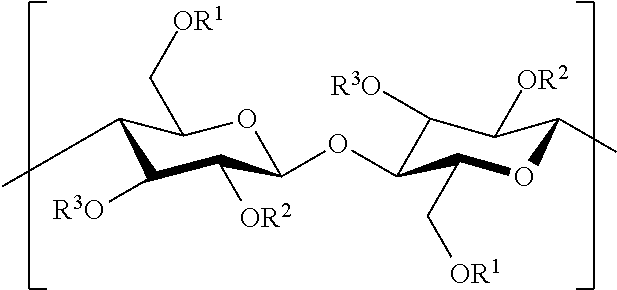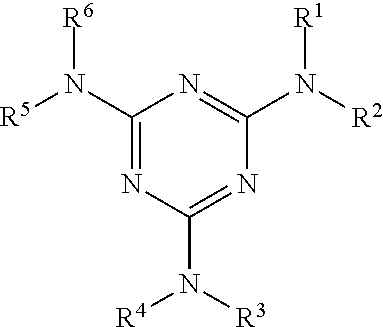Elastomeric compositions comprising cellulose ester additives
a technology of cellulose ester and additives, which is applied in the field of elastomeric compositions comprising cellulose ester additives, can solve the problems of increased cost, scorching time, and inability to withstand hea
- Summary
- Abstract
- Description
- Claims
- Application Information
AI Technical Summary
Benefits of technology
Problems solved by technology
Method used
Image
Examples
example 1
[0090]Elastomeric compositions containing varying amounts of cellulose ester additive were compared to elastomeric compositions not containing any CEA. The elastomeric compositions were produced according to the formulations and parameters as shown in Table 1 and Table 2.
[0091]Table 1a lists the apex elastomeric compositions tested. The reference formulation was obtained from published open literature. Three different filler systems were applied in this study including silica and carbon black. A cellulose ester additive (CEA) was added in increasing phr in compounds from 0 to 15. Table 1b lists the sidewall and tread elastomeric compositions tested.
[0092]The elastomeric compositions were mixed in a 1.5 L Kobelco Banbury mixer with 4-wing tangential rotors. The elastomeric compositions were mixed in three mixing stages as outlined in Table 1, and described in Table 2. Various performance properties of the elastomeric compositions produced in Example 1 were tested. The properties are ...
PUM
| Property | Measurement | Unit |
|---|---|---|
| weight percent | aaaaa | aaaaa |
| weight percent | aaaaa | aaaaa |
| weight percent | aaaaa | aaaaa |
Abstract
Description
Claims
Application Information
 Login to View More
Login to View More - R&D
- Intellectual Property
- Life Sciences
- Materials
- Tech Scout
- Unparalleled Data Quality
- Higher Quality Content
- 60% Fewer Hallucinations
Browse by: Latest US Patents, China's latest patents, Technical Efficacy Thesaurus, Application Domain, Technology Topic, Popular Technical Reports.
© 2025 PatSnap. All rights reserved.Legal|Privacy policy|Modern Slavery Act Transparency Statement|Sitemap|About US| Contact US: help@patsnap.com


